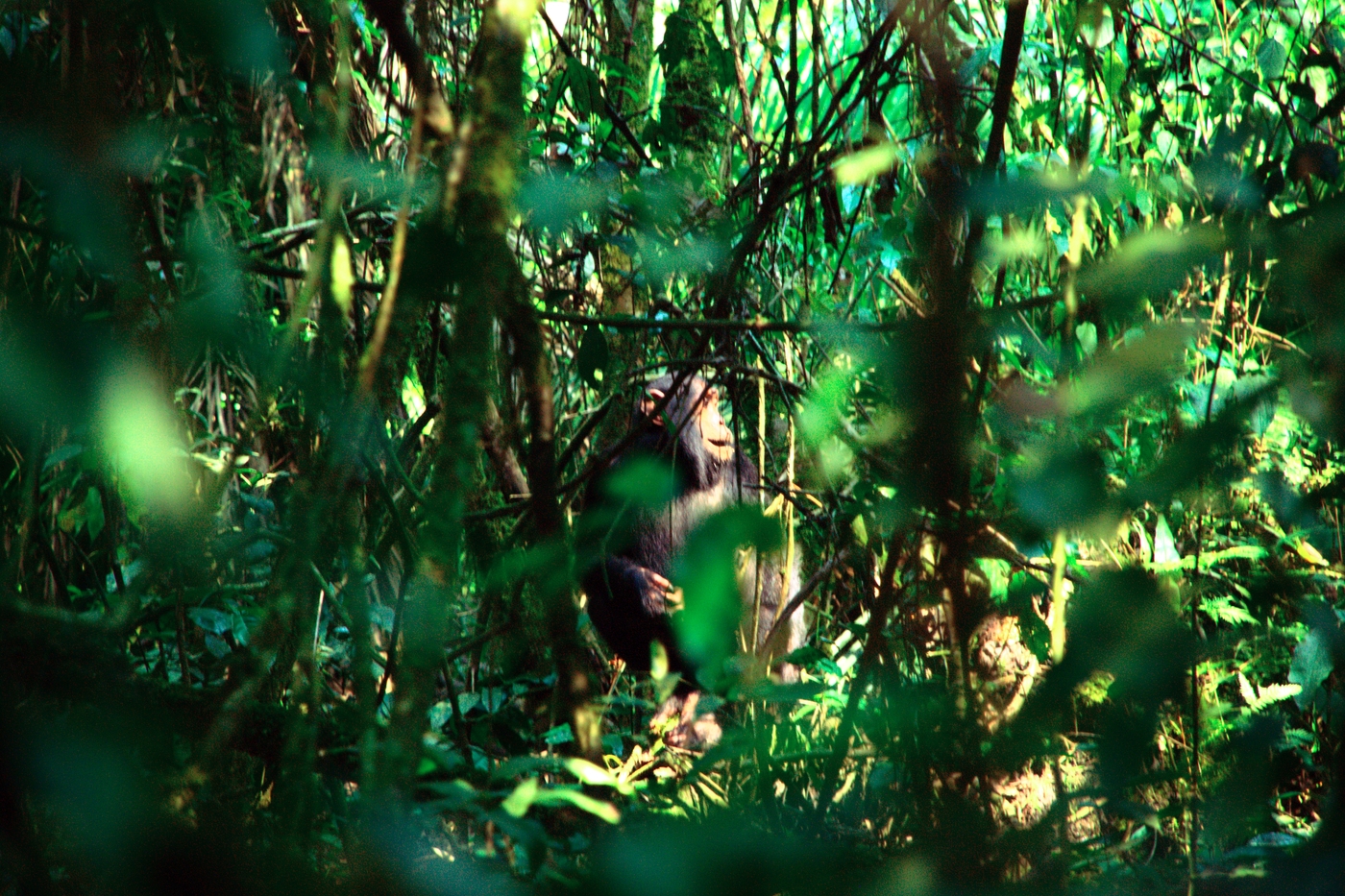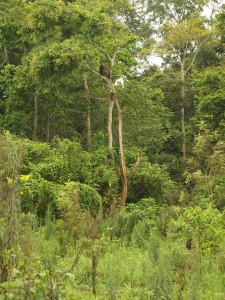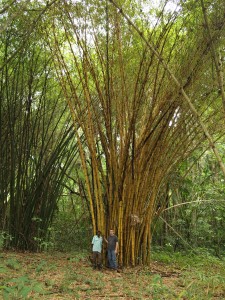The Teco Munteme has a large, contiguous piece of adjacent virgin forest of about 350 ha, in addition to grassland and scrubland of about 150 ha. This area could be leased, surveyed and securitised by the government for 49 years at the end of the 1980s. At that time, however, its stock of valuable timber was only small, but its importance for the future of the school was nevertheless recognised. The long-time employee Seezi Mugisa has supervised and organised all these experiments and works with great dedication over all these years up to the present day. It is ultimately thanks to him that the forest area has not been touched by the strong demand for cultivated land until today.
Fauna and flora
Initially, the primates living in the forest were rather a nuisance; especially the large number of baboons that regularly plundered or destroyed the fields of the school and other abutters. Even guards and fences of all kinds were hardly a match for the cunning and learning ability of these animals. At that time, however, the chimpanzees were only rare and shy guests. On the other hand, the curious black and white colobus and guenons showed themselves very close to the houses. Mangabees and red-tailed monkeys were very shy and therefore rarely observed. This was not least because there were many other intact forest areas nearby, especially along the streams and rivers. Due to its compactness, Itohya is also rich in birds and insects that feed on its diversity and thus contribute to its continued existence.
In various publications, the great biodiversity of this forest is rated as particularly significant. Uganda’s already species-rich vegetation culminates here in a “biodiversity hot spot”, with a great variety of trees, bushes and shrubs. in addition, the Itohya Forest forms an important water reservoir with its intricate river courses and swamps as well as a considerable groundwater reservoir.
Forest under pressure
As a result of growing population in the area, more and more virgin forest has been cleared for agricultural use. Coupled with the increasing demand for timber, intruders have been illegally felling large trees in the Itohya Forest in order to secretly sell the timber. As logging increased in the neighbourhood, the forest became a haven for primates, birds and other animals, which, however, also attracted the trappers, with attendant consequences.
Welcome support
Thanks to a lucky coincidence, the Ugandan organisation CSWCT (Chimpanzee Sanctuary and Wildlife Conservation Trust, or Chimpanzee Trust for short) came on the scene in 2007 through the mediation of the then principal Raphael Eribankia. A Memorandum of Understanding was negotiated, which was renewed in 2013 and still exists today. The aim of the agreement is to protect the primates, but also to preserve the forest in its original size and biological diversity. Various expert reports describe this region as particularly rich in species, both flora and fauna.
Reforestation of timber
Already in the late 1980s and early 1990s, the diversity of indigenous tree species was increased again through numerous and intensive experiments with seed cultivation, planting and maintenance.
In addition, the school has planted several plots of bush land with fast-growing tree species as timber for the construction of the school, for firewood and for sale (electricity poles). These have now grown to a stately size, but some of them have already been heavily harvested.
The bush land to the west of the forest has been completely cultivated by tenants in recent years, who are now being instructed to gradually cede these plots to afforestation, as their right of use is not legal due to unclear machinations.
Scientific monitoring
In order to better protect the primates from hunting and displacement, but also for scientific research into their migration, Chimpanzee Trust has set up an observation post. Regular counts and observations are carried out by students and interns from the Jane Goodall Foundation and Makerere University.
Holistic approach
Chimpanzee Trust also oversees various projects in the area around the Itohya Forest, with the aim of improving the local population’s acceptance of primates and forest protection, as compensation for no longer hunting the fauna and preventing the cutting of construction and firewood in the forest. This work is very important but also very delicate, because a paradigm shift must take place among the people concerned, so that for them the forest is no longer a threat and a self-service shop, but a unique opportunity for new fields of activity and income (ecotourism, educational offers, special agricultural products, etc.), which will enable the forest to survive in the long term.
The Friends of Teco support these activities as much as possible, because they are a key prerequisite for the continuation of the idea of the school. This is all the more so as the rate of deforestation in the nearby surroundings is still goss.


